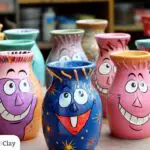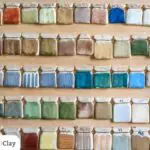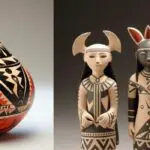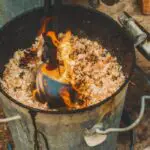Native American art is an umbrella term for what artisans created across a large geographic area. That geographic area stretches from the northern reaches of Canada to the southern tip of Argentina. One of the most celebrated artisan cultures was the Pueblo Native Americans. And their biggest artisan legacy is pueblo pottery.
In this article, we’ll cover a brief history of the Puebloan people. Then we’ll talk about the pottery ancestral Puebloans made and how they made it.
A brief history of Pueblo pottery
The Puebloans settled in modern-day New Mexico, Northern Arizona, and other parts of the Southwest United States. They are known widely in the art community for their craftsman-level pottery. Archeologists believe the first Pueblo people to settle in these regions did so around A.D. 100 or 2,000 years ago.
These early settlers developed pueblos which is best translated as towns or villages. The ancestral Puebloan people exhibited an advanced understanding of architecture.
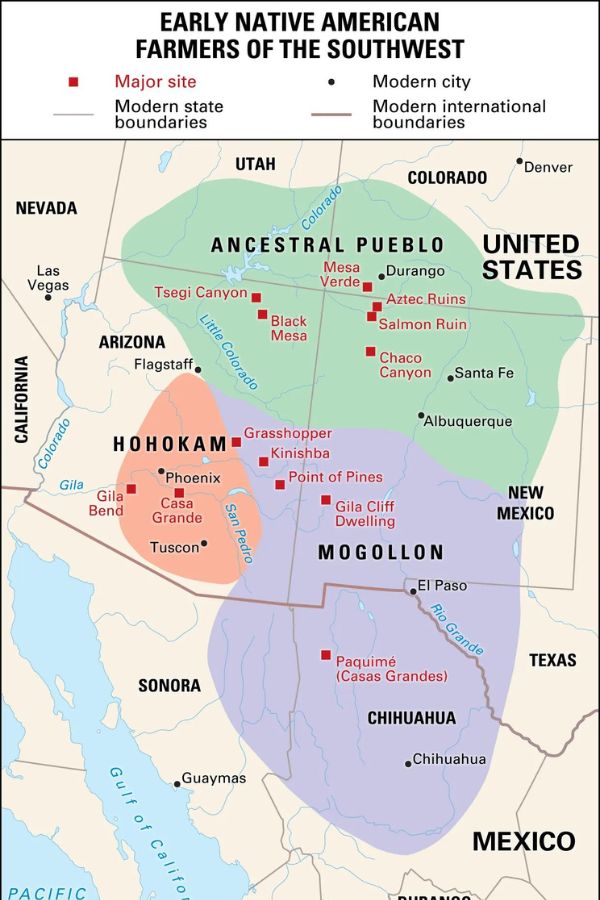
Pueblo structures are mostly made from adobe, stone, and wood with flat roofs that allowed for multiple floors to be added. Many of the structures still stand today.
Early pueblos were built into the sides of cliffs and other naturally occurring walls. But with raids, the villages needed better protection. So pueblos were planned strategically where more people could live together on better-positioned land for defense. Some of these later pueblos have come to resemble city-states found in other parts of the world at this time.
In the Pueblo pottery tradition, Pueblo potters have been mostly women. The trade is passed from generation to generation from female relative to female relative. The ancestral Puebloan people were deeply spiritual. And making a piece of pottery included prayers of gratitude for the clay and
How did early Puebloans make pottery?
So how did the ancient Puebloans make pottery? In this section, we’ll explore their techniques for construction and methods for firing.
The Puebloan’s traditional method of making pottery
Early Puebloan potters made pottery primarily with the coiling method, one of the three handbuilding techniques.
With a coil pot, a potter forms a base, walls, and style by combining clay coils (or cylinders). The potter rolls the clay into coils, stacks the coils together, and joins the coils through pressure.
What clay did ancestral pueblos use?
The clay ancestral Pueblos used to make their wares was raw clay dug from around the settlement. The clay they used was probably similar to an earthenware clay that you can buy at the store. Once it was collected from the area, the artist would grind the clay between stones and add substances like volcanic ash to the mix. This functions as a grog to strengthen the final piece.
How was pottery fired?
Like many ancient pottery makers, the Puebloans didn’t get sophisticated with their kilns. Most pottery was fired in a bonfire. As time went on, the ancient pueblos potter would use dug pits for firing to achieve a high temperature. Often manure, dried grass, and other combustibles were applied to top of the pieces of pottery to create a carbon trap. The process would blacken the surface of the pot resulting in beautiful designs.
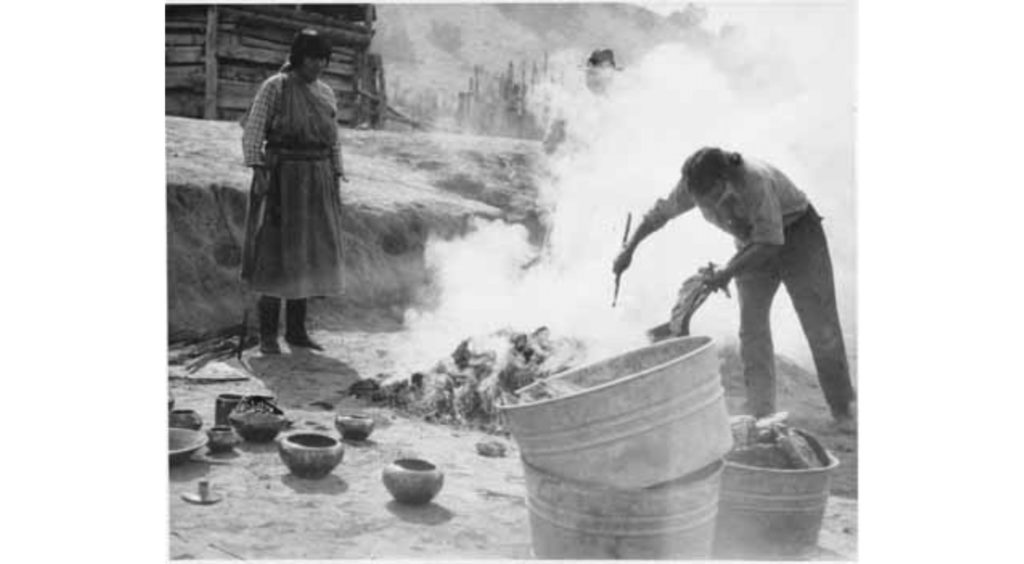
Popular Pueblo pottery styles and decorations
There are really two camps when it comes to Pueblo pottery: Utilitarian and decorative. Every culture has a use for pottery. The Puebloans are no different. Their wares are used as bowls, vases, and plates for storing foods and liquids, carrying items, and serving at meal times.
On the decorative side of things, there are a few pueblo cultures worth mentioning:
Acoma Pottery: Acoma Pueblo is best known for its polychrome style. Acoma Pottery is known for intricate geometric patterns and black and orange colors on the clay pot.
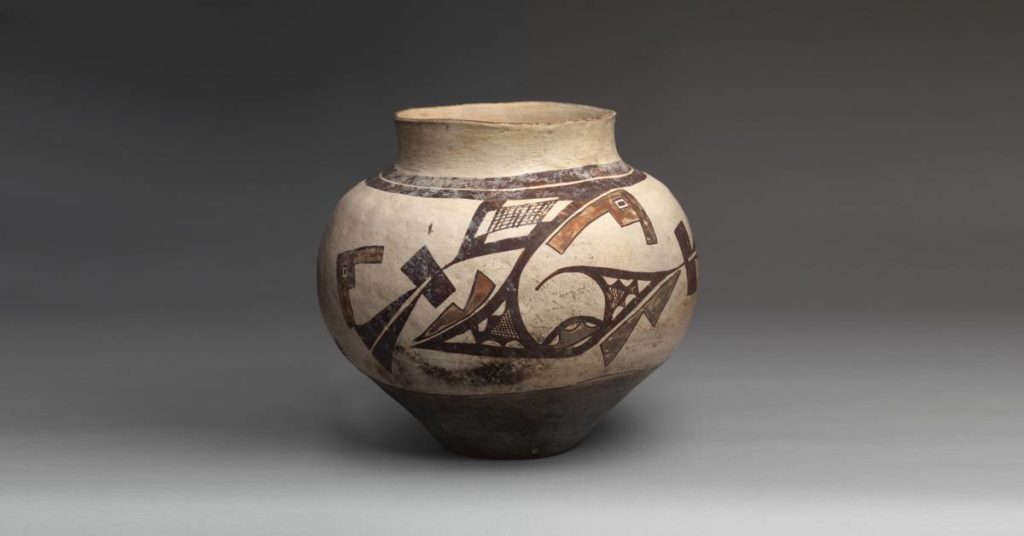
Hopi Pottery: This culture within the Puebloan culture popularized sikyatki yellowware. The style features brown-ish red designs that are painted with yucca leaves on a tan background. To get the yellow color, the potter first mines a gray clay. The pots are then fired in open pits using manure and other combustibles which brings out the yellow finish.
Cochiti Pottery: The Cochiti potter popularized telling stories with pottery. Drawings of animals and people would show depict somber or playful scenes on clay pots and figurines
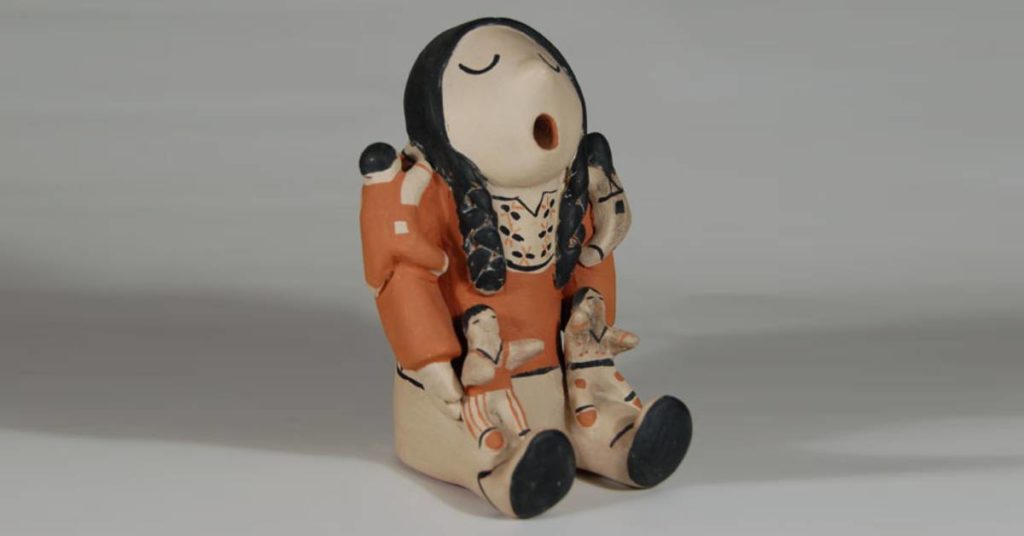
Jemez Pottery: Jemez potters produced a lot of pottery. Most common in the early days was a style of black on white ware. In later years, black on red and black on tan were developed (far more technical styles).
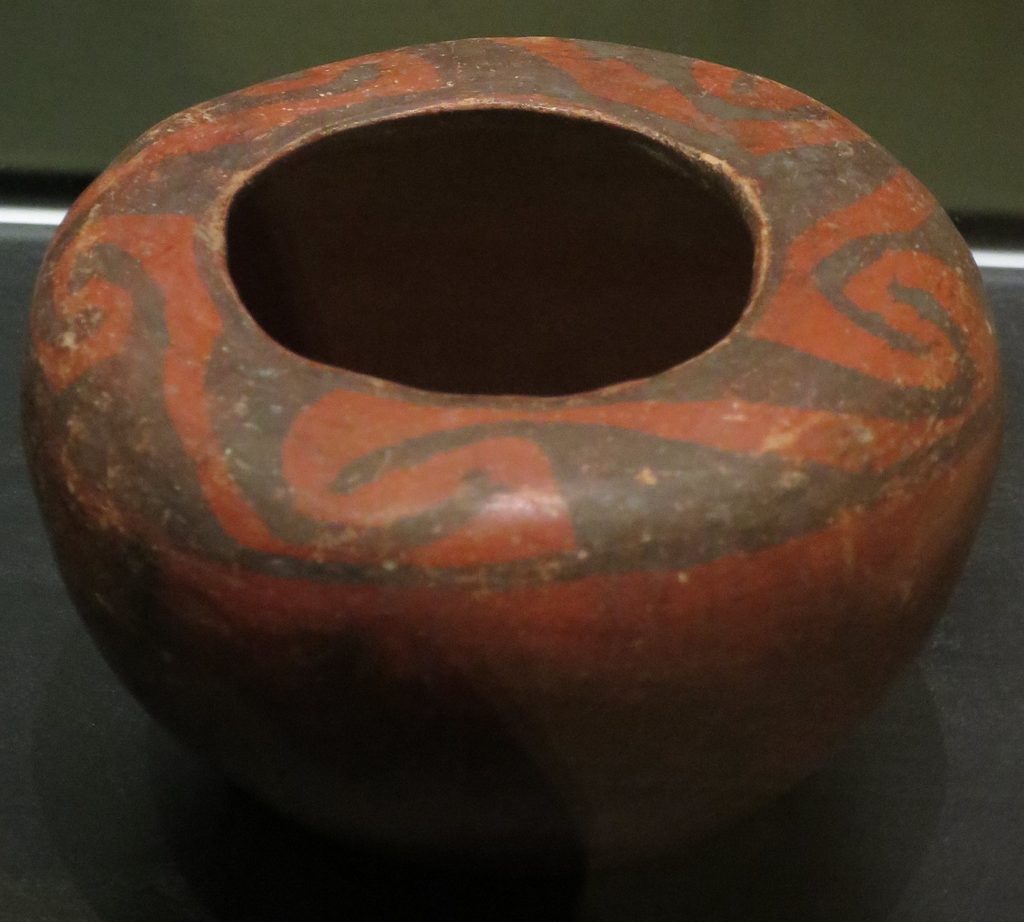
Conclusion
Native American pottery is a large collection of many cultures across a large geography. The Puebloan people rightfully own a prominent place as their ancestral works are celebrated even today.
We hope you enjoyed this brief dive into ancestral pueblo pottery. If you have any questions, please let us know! Simple email hello@wheelandclay.com. We’ll get back to you as quickly as possible.
Related articles
A guide to ancient Mayan pottery
9 Navajo pottery designs you’ll want to check out
A guide to ancient Aztec pottery
A guide to ancient Egyptian pottery

